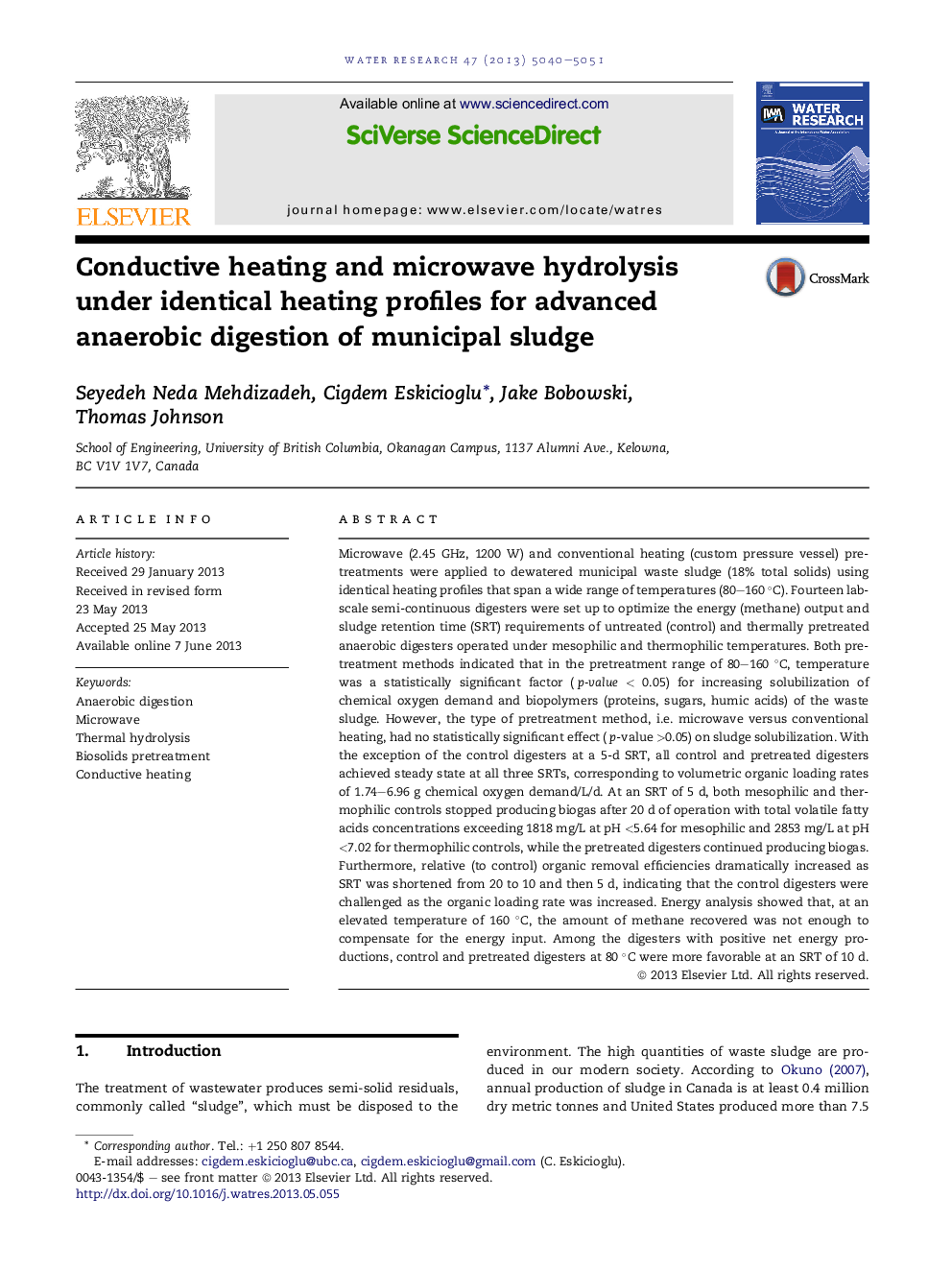| کد مقاله | کد نشریه | سال انتشار | مقاله انگلیسی | نسخه تمام متن |
|---|---|---|---|---|
| 6367587 | 1316843 | 2013 | 12 صفحه PDF | دانلود رایگان |
عنوان انگلیسی مقاله ISI
Conductive heating and microwave hydrolysis under identical heating profiles for advanced anaerobic digestion of municipal sludge
ترجمه فارسی عنوان
گرمایش و هدایت گرمایی و هیدرولیز مایکروویو تحت پروفیل حرارت یکسان برای هضم پیشرفته بی هوازی از لجن شهری
دانلود مقاله + سفارش ترجمه
دانلود مقاله ISI انگلیسی
رایگان برای ایرانیان
کلمات کلیدی
موضوعات مرتبط
مهندسی و علوم پایه
علوم زمین و سیارات
فرآیندهای سطح زمین
چکیده انگلیسی
Microwave (2.45 GHz, 1200 W) and conventional heating (custom pressure vessel) pretreatments were applied to dewatered municipal waste sludge (18% total solids) using identical heating profiles that span a wide range of temperatures (80-160 °C). Fourteen lab-scale semi-continuous digesters were set up to optimize the energy (methane) output and sludge retention time (SRT) requirements of untreated (control) and thermally pretreated anaerobic digesters operated under mesophilic and thermophilic temperatures. Both pretreatment methods indicated that in the pretreatment range of 80-160 °C, temperature was a statistically significant factor (p-value < 0.05) for increasing solubilization of chemical oxygen demand and biopolymers (proteins, sugars, humic acids) of the waste sludge. However, the type of pretreatment method, i.e. microwave versus conventional heating, had no statistically significant effect (p-value >0.05) on sludge solubilization. With the exception of the control digesters at a 5-d SRT, all control and pretreated digesters achieved steady state at all three SRTs, corresponding to volumetric organic loading rates of 1.74-6.96 g chemical oxygen demand/L/d. At an SRT of 5 d, both mesophilic and thermophilic controls stopped producing biogas after 20 d of operation with total volatile fatty acids concentrations exceeding 1818 mg/L at pH <5.64 for mesophilic and 2853 mg/L at pH <7.02 for thermophilic controls, while the pretreated digesters continued producing biogas. Furthermore, relative (to control) organic removal efficiencies dramatically increased as SRT was shortened from 20 to 10 and then 5 d, indicating that the control digesters were challenged as the organic loading rate was increased. Energy analysis showed that, at an elevated temperature of 160 °C, the amount of methane recovered was not enough to compensate for the energy input. Among the digesters with positive net energy productions, control and pretreated digesters at 80 °C were more favorable at an SRT of 10 d.
ناشر
Database: Elsevier - ScienceDirect (ساینس دایرکت)
Journal: Water Research - Volume 47, Issue 14, 15 September 2013, Pages 5040-5051
Journal: Water Research - Volume 47, Issue 14, 15 September 2013, Pages 5040-5051
نویسندگان
Seyedeh Neda Mehdizadeh, Cigdem Eskicioglu, Jake Bobowski, Thomas Johnson,
